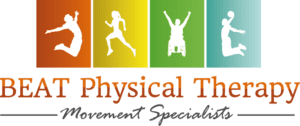Physical Therapy As Treatment To Low Back Pain
Different physical therapy techniques are used to treat low back pain. These include manual therapy, exercise, and traction. For acute back pain, advanced treatment procedures can be applied like spinal manipulation and stabilization exercises.
Individual patients are treated based on their specific documented signs and symptoms. Studies show that “spinal manipulation techniques followed by stability exercises rapidly reduce disability with benefits noted up to 6 months compared to other treatments”.1
Low back pain may range from dull pain to a sudden, sharp pain. Acute pain usually persists for few days, while chronic pain continues for more than 3 months. In most cases, low back pain may resolve without any treatment; however, if it continues indefinitely, consult a physical therapist immediately.
Various medical conditions like kidney diseases, kidney and bladder infections, ovarian disorders, pregnancy, or nerve root syndromes such as sciatica, herniated discs, musculoskeletal problems, osteomyelitis, spondylitis, spinal stenosis, spine injuries, and fractures may contribute to development of low back pain.
For the most part, low back pain can be alleviated with rest, ice or heat, pain relievers, nonsteroidal anti-inflammatory drugs, corticosteroids, and rehabilitation. Specific conditions causing severe, unremitting pain may require surgical treatment. Treating underlying conditions offers relief from the back pain.
Low back strain is one of the common causes for low back pain. Low back strain occurs when the muscles or tendons in the lower back get overstretched or aggravated. It is usually caused by improperly lifting heavy objects (overload), standing or sitting for long periods of time, a direct blow to the lumbar region, or active sports such as baseball, basketball, or golf that involve a sudden twisting of the lower back and spine.
Weak abdominal muscles, excessive low back curvature, or a forwardly tilted pelvis increase the risk of low back injury. The usual symptoms include:
- Low back pain that radiates down to the buttocks or leg all the way to the foot,
- Inflammation of the soft tissues and muscles,
- Stiffness in the low back,
- Restricted movements,
- Inability to maintain correct posture;
- Muscle spasms, and
- Unremitting pain.
Consult your doctor for a thorough physical examination. An X-ray and MRI scan may be required by your physician to confirm the root cause of the back injury. Your doctor can also recommend physical therapy treatment.
Conservative Rehabilitation Treatment of Spine or Low Back Pain
- Rest. However, prolonged bed rest should be avoided as it leads to loss of muscle strength and makes the muscles stiff which will aggravate the pain and discomfort. Hence, bed rest should not be continued for more than 48 hours.
- Ice packs can be applied to the back injury which will help to diminish swelling and pain. Do not place ice directly on skin. Use a towel between the ice pack and the skin and apply to the affected area for 15-20 minutes four times a day for 72 hours.
- Back braces or belts are used to support the back while the healing occurs.
- Over-the-counter pain medications. Consult your physician for pain prescriptions or nonsteroidal anti-inflammatory drugs that will help to reduce pain and inflammation. Other medications such as muscle relaxants reduce muscle spasms.
- Physical therapy program which consists of stretching and strengthening exercises, manual therapy, lumbar traction, and cold or heat therapy among other treatments. It helps to provide pain relief or reduction which can allow a quicker return to weight bearing and functional activities. Abdominal and core strengthening will increase support to the lumbar spine.
Preventive Measures For Spine or Back Strain
- Warm up exercises before the start of any physical activity or sports. Take short breaks in between the activity.
- Proper lifting techniques. Practice squatting to lift a heavy object instead of lifting from the low back.
- Proper posture both when sitting and standing.
- Diet. Maintain a healthy weight and diet.
- Regular exercise. Exercising improves spinal stability and prevents additional stress on the back.
Source:
- Childs, J. Fritz, J. et al. A Clinical Prediction Rule To Identify Patients with Low Back Pain Most Likely To Benefit from Spinal Manipulation: A Validation Study. Annals of Int Med. 2004/920-928
